Comments / Questions (25)
![]() Ann wrote:
Ann wrote:
Stickar höger framställer. När arb mäter 47 cm ska jag sticka 14 m räta mot mitt fram. Är det med de 4 m? Ska avm 10 m vilka? De 4 m mot halsen rätstickas till färdigt mått? Hur gör jag det?
16.05.2023 - 15:29DROPS Design answered:
Hej Ann, det är de 10 ut av de 14 räta m mot mitt fram som skall maskas av. De 4 som är kvar stickas i rätst till färdigt mått :)
17.05.2023 - 09:53
![]() Olofsson wrote:
Olofsson wrote:
Jag har beställt garnet till tröjan. Kan jag få mönstret på papper medskickat? Vänliga hälsningar Pia
20.02.2021 - 12:33DROPS Design answered:
Hej Pia. Se på din orderbekräftelse vilken återförsäljare du beställt av och kontakta dem för att be om detta. Mvh DROPS Design
22.02.2021 - 11:27
![]() Rene Gould wrote:
Rene Gould wrote:
Hi I'm doing the back just started it where it says after 15cm increase one stitch do I increase at the beginning of the row or after the three moss stitches thankyou
25.09.2020 - 22:42DROPS Design answered:
Dear Mrs Gould, I'm sorry I don't find anywhere in the pattern where you incraese on back piece after 15 cm- Can you please tell us more? On back piece you are supposed to cast on new sts on each side at the very beg: 3 x3 + 2x4 + 1 x3= 20 new sts in total on each side.
28.09.2020 - 08:40
![]() Vibeke Ellermann wrote:
Vibeke Ellermann wrote:
Hej På billedet synes jeg det ser ud til både ryg og forstykker har en kant forneden på fire pinde retstrik, ligesom ærmerne - men i opskriften står der at man strikker glatstrik fra starten... Med venlig hilsen Vibeke
31.07.2019 - 19:34DROPS Design answered:
Hej Vibeke, de 4 pinde retstrik står beskrevet under Monteringen. God fornøjelse!
01.08.2019 - 15:16
![]() Parola wrote:
Parola wrote:
Grazie.....forse potevo anche capirlo da sola:( Grazie ancora
07.04.2018 - 20:20
![]() Paola wrote:
Paola wrote:
Buonasera, non capisco suggerimento per le diminuzioni dove dite Diminuire come segue dopo le 4 m a m legaccio: passare 1 m a dir senza lavorarla, 1 m dir, accavallare la m passata sopra quella appena lavorata. Diminuire come segue prima delle 4 m a m legaccio: 2 m insieme a dir. le devo fare prima delle 4 m o dopo, perchè nelle istruzioni c'è scritto diminuire 1 m all'altezza della scollatura a f alterni, grazie
07.04.2018 - 18:49DROPS Design answered:
Buonasera Paola. Deve diminuire sempre quando lavora sul diritto del lavoro, un ferro sì e un ferro no. Sul davanti destro, diminuisce dopo le 4 m a legaccio; su quello sinistro, prima delle 4 m a legaccio. Buon lavoro!
07.04.2018 - 20:14
![]() Kerstin wrote:
Kerstin wrote:
Hallo, ich habe angefangen, diese Jacke zu stricken, allerdings rollen sich die Ränder sehr ein, da glatt gestrickt wird. Gibt es einen Trick, dies zu verhindern?
02.05.2017 - 10:08DROPS Design answered:
Liebe Kerstin, die Maschenprobe musst immer stimmen! Am Ende können Sie immer die Jacke mit Stecknadeln blockieren. Viel Spaß beim stricken!
02.05.2017 - 13:27
![]() Himlajord wrote:
Himlajord wrote:
Varför denna rättelse i mönstret? Man plockar ju upp maskor efter man sytt ihop koftan och gör 4 varv rätstickning då?
08.09.2016 - 08:49DROPS Design answered:
Hej Himlajord. Det har du fuldstaendig ret i, det er en fejl, som vi har rettet tilbage igen. Tak ;-)
08.09.2016 - 11:35
![]() Himlajord wrote:
Himlajord wrote:
Varför denna rättelse i mönstret? Man plockar ju upp maskor efter man sytt ihop koftan och gör 4 varv rätstickning då?
03.09.2016 - 21:40
![]() Lucia wrote:
Lucia wrote:
Nelle spiegazioni del lavoro si indica di iniziare con maglia rasa ma dalla foto sembrerebbero un paio di ferri lavorati a punto legaccio....cosa e giusto ?
19.08.2016 - 16:31DROPS Design answered:
Buongiorno Lucia. Molto probabilmente i primi quattro ferri del davanti e dietro devono essere lavorate a punto legaccio, come indicato per le maniche. Trasmettiamo la sua segnalazione alla casa madre. Eventuali correzioni al testo verranno apportate direttamente online. Grazie e buon lavoro!
19.08.2016 - 16:40
Beachcomber#beachcombercardigan |
|
|
|
|
DROPS wide cardigan knitted with stockinette sts in ”Bomull-Lin” and buttons in ”Cotton Viscose”
DROPS 100-5 |
|
|
Knitting gauge: 16 sts x 20 rows with Bomull-Lin in stockinette sts = 10 x 10 cm / 4" x 4" Garter st back and forth: Knit all rows Decreasing tip (applies to neckline): Make all dec from RS: Dec as follows after 4 sts garter st: Slip 1 st as if to knit, K1, psso. Dec as follows before 4 sts garter st: K2 tog. Buttonhole: Bind off for buttonhole on right front edge: 1 buttonhole= bind off 3rd and 4th from mid front. Cast on 2 new sts on next row over bound off sts. Bind off for buttonhole when piece measures: Size S: 26, 34 and 42 cm / 10¼", 13⅜",16½" Size M: 28, 36 and 44 cm / 11", 14¼", 17¼" Size L: 30, 38 and 46 cm / 11¾", 15", 18" Size XL: 30, 38 and 46 cm / 11¾", 15", 18" Size XXL: 32, 40 and 48 cm / 12½", 15¾", 19" Size XXXL: 34, 42 and 50 cm / 13⅜", 16½", 19¾" Back piece: Cast on 42-48-56-62-72-82 sts on needle size 6 mm / US 10 with Bomull-Lin. Continue in stocking sts and at the same time as inc each side on every other row as follows: 3 sts 3 times , 2 sts 4 times and 1 st 3 times = 82-88-96-102-112-122 sts (incl 1 edge st each side). When piece measures 45-46-47-48-49-50 cm / 17¾"-18"-18½"-19"-19¼"-19¾" bind off 1 edge st each side = 80-86-94-100-110-120 sts. When piece measures 64-66-68-70-72-74 cm / 25¼"-26"-26¾"-27½"-28⅜"-29⅛" knit 4 rows garter sts over middle 36-38-42-42-44-46 sts (work remaining sts as before). On next row bind off middle 28-30-34-34-36-38 sts for neck = 26-28-30-33-37-41 sts left on each shoulder. Work each side separately and continue with 4 sts garter sts at side of neckline. Bind off when piece measures 68-70-72-74-76-78 cm / 26¾"-27½"-28⅜"-29⅛"-30"-30¾". Right front piece: Cast on 45-48-52-55-60-65 sts (incl 1 edge st on side and 8 front band sts) on needle size 6 mm / US 10 with Bomull-Lin. Continue in stocking sts and with 8 front band sts in garter st. At the same time bind off for buttonhole – see explanation above. When piece measures 35-36-37-38-39-40 cm / 13¾"-14¼"-14½"-15"-15¼"-15¾" bind off 1 edge sts on side = 44-47-51-54-59-64 sts. When piece measures 43-45-47-47-49-51 cm / 17"-17 ¾"-18½"-18½"-19¼"-20" knit 2 rows garter sts over 14 sts mid front (work remaining sts as before). Bind off 10 sts mid front on next row. Knit 4 sts garter sts at neckline until final measurement and dec 1 st at neckline on every other row – read Decreasing tip: 8-9-11-11-12-13 times = 26-28-30-33-37-41 sts left on shoulder. Bind off when piece measures 58-60-62-64-66-68 cm / 22¾"-23⅝"-24⅜"-25¼"-26"-26¾". Left front piece: Cast on and work as right but reversed. Sleeve: Cast on 76-79-82-85-88-92 sts (incl 1 edge st each side) on needle size 6 mm / US 10 with Bomull-Lin. Work 4 rows garter sts, continue in stockinette sts. Bind off when piece measures 34-33-32-31-29-27 cm / 13½"-13"-12½"-12¼"-11½"-10½". (Shorter sleeves on larger sizes due to wider shoulder width). Assembly: Sew shoulder seams. Sew in sleeves. Sew sleeve seams and side seams in one within 1 edge st. Pick up approx 180-195-210-225-245-265 sts along entire bottom edge of jacket and knit 4 rows garter st. Bind off. Button cover: Crochet 3 button covers on crochet hook size 3 mm / C with Cotton Viscose as follows: Ch 2, then crochet 6 sc in first ch, complete with 1 sl st in first sc of round (= 1st round.). 2nd round: Crochet 2 sc in each sc = 12 sc. 3rd round: * crochet 1 sc in 1st sc, crochet 1 sc in 2nd sc, crochet 2 sc in 3rd sc *, repeat from *-* and finish with 1 sl st in 1st sc of round = 16 sc. 4th, 5th and 6th round: Crochet 1 sc in each sc. 7 th round: Crochet 1 sc in every other sc = 8 sc. Finish off with 1 sl st in 1st sc of round. Put buttons inside cover, sew around edge and pull tog. Sew buttons on jacket. |
|
 |
|
Have you finished this pattern?Tag your pictures with #dropspattern #beachcombercardigan or submit them to the #dropsfan gallery. Do you need help with this pattern?You'll find 22 tutorial videos, a Comments/Questions area and more by visiting the pattern on garnstudio.com. © 1982-2026 DROPS Design A/S. We reserve all rights. This document, including all its sub-sections, has copyrights. Read more about what you can do with our patterns at the bottom of each pattern on our site. |











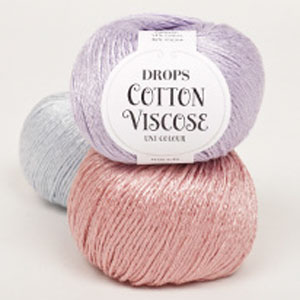

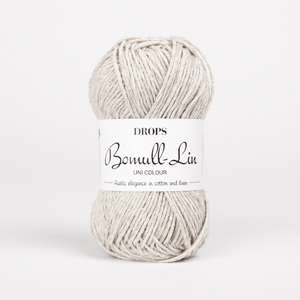
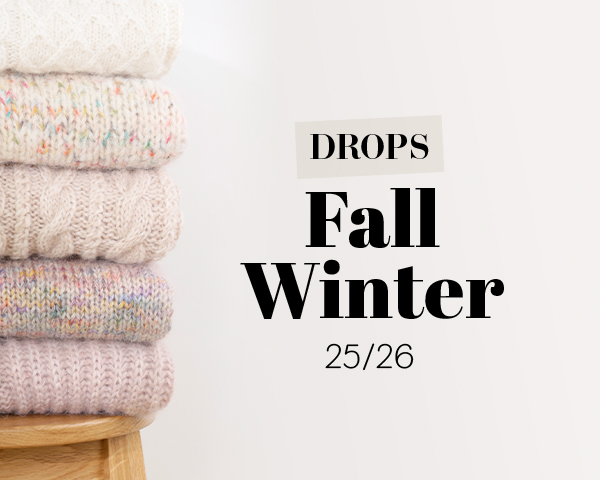








































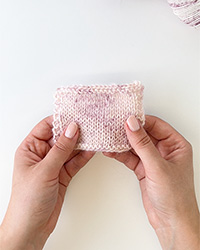
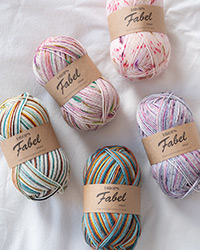
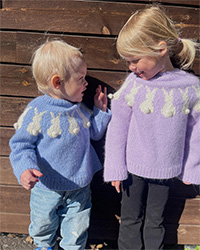
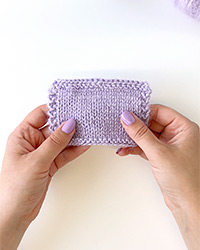
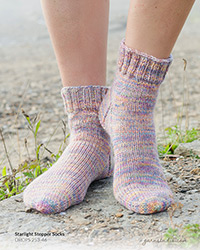
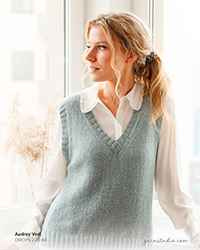
Post a comment to pattern DROPS 100-5
We would love to hear what you have to say about this pattern!
If you want to leave a question, please make sure you select the correct category in the form below, to speed up the answering process. Required fields are marked *.